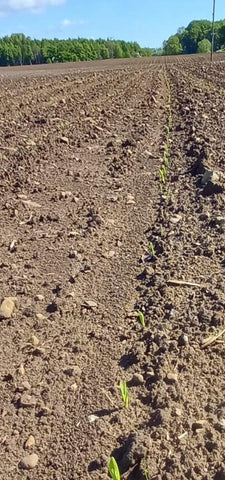How to Maintain Soil Fertility
Limestone and pH go hand in hand when it comes to optimising soil fertility. While soil fertility refers to the ability of sustaining agricultural plant growth, the pH focuses on the acidity or alkalinity of the soil based on a scale of 1-14. Both elements together help to create consistent, high quality yields.
The Importance of Soil pH
The soil pH influences the microbial activity and nutrient availability, significantly impacting plant growth. The pH also influences response from the nutrient supply and trace element uptake, although this can be affected by the soil type and structure.
However, it is important to note that the optimum pH is specific to the species of plant types. For example, grassland would have a pH of 6.3.
Limestone and Soil pH
Limestone can be used to alter the pH levels of soil, there being different ways of increasing and decreasing the levels.
However, when too much limestone is added to the soil, it can accumulate excess salts and will be unable to take up nutrients.

How Can Lime Impact the Soil pH?
Adding lime to the soil increases pH levels effectively. However, this can also be done by adding nitrogen fertilisers which help to acidify the soil.
Lime is constantly being removed from the soil – for example, when grass is cut or by grazing animals. Although lighter soils lose more lime than heavier ones, the amount of lime which is needed can be calculated in a lab. This is done by observing the buffering capacity of the soil, resulting in the amount of lime which would be needed to change the pH level.
When Should Lime Be Added to the Soil?
To optimise soil fertility, lime should be applied to the soil when there is little grass which needs covering. Due to this, grazing or cutting should be avoided until all the lime has been washed into the soil.
Ideally, this process should be carried out during the spring time. However, if the weather is not too wet, it can also be done in the autumn, as the pH will correct over the winter and prevent a lag in grass growth over the spring.
Calcium and Magnesium for Soil Fertility
Calcium and magnesium have polar effects on the soil and its pH. While calcium causes spaces between the soil which aid aeration, the magnesium alternatively causes soil particles to stick together.
Magnesium can be applied to increase the pH level whereas ground limestone can be applied to increase the levels of calcium in the soil. When using gypsum however, the levels of calcium will increase, therefore decreasing the pH level.
This makes it imperative to maintain the correct calcium to magnesium ratio, particularly when dealing with heavier clay soils.
For more information on maintaining soil fertility or for further advice, contact the team at Grass Science Seeds!

